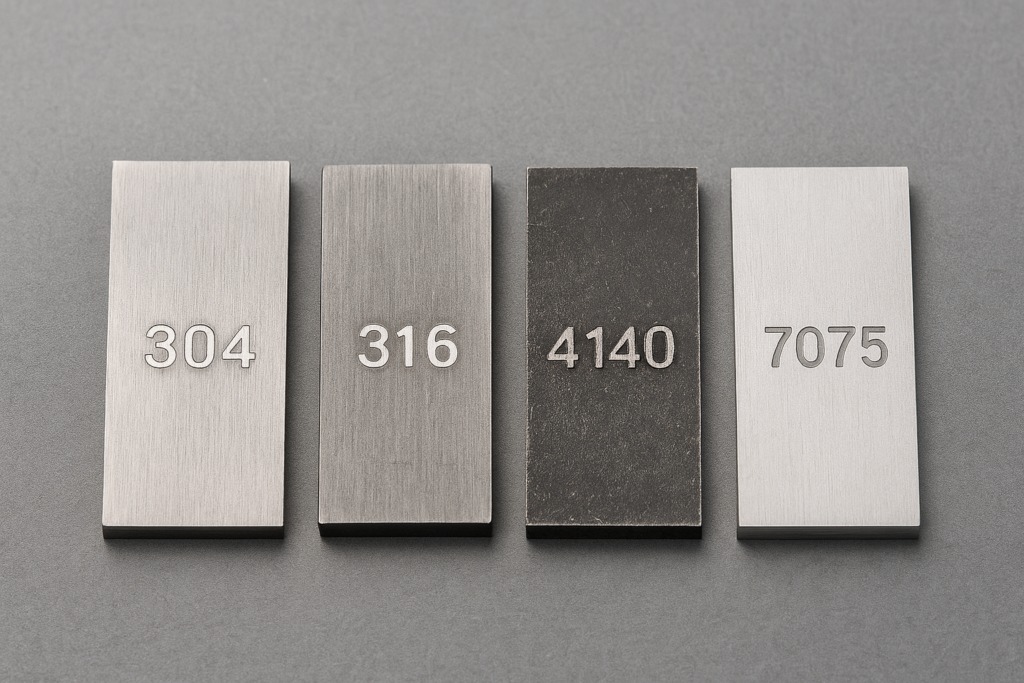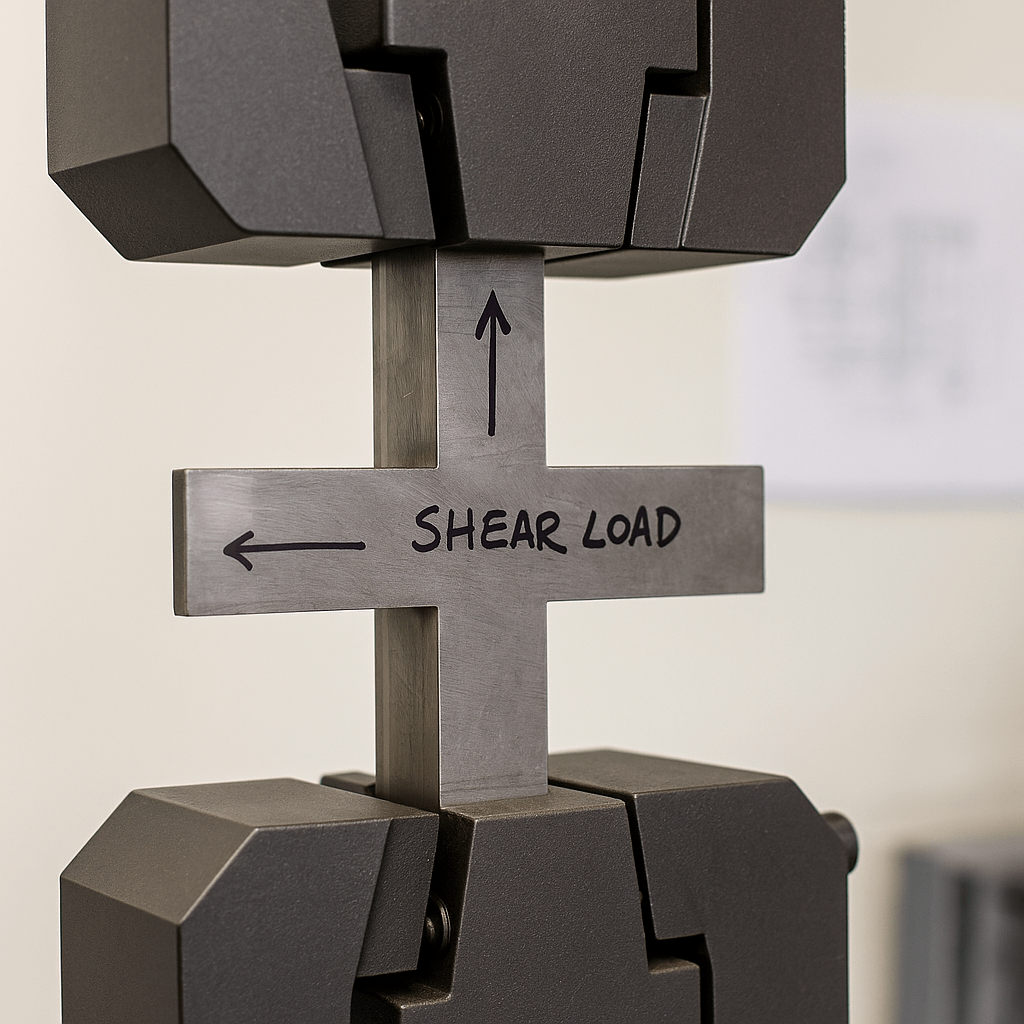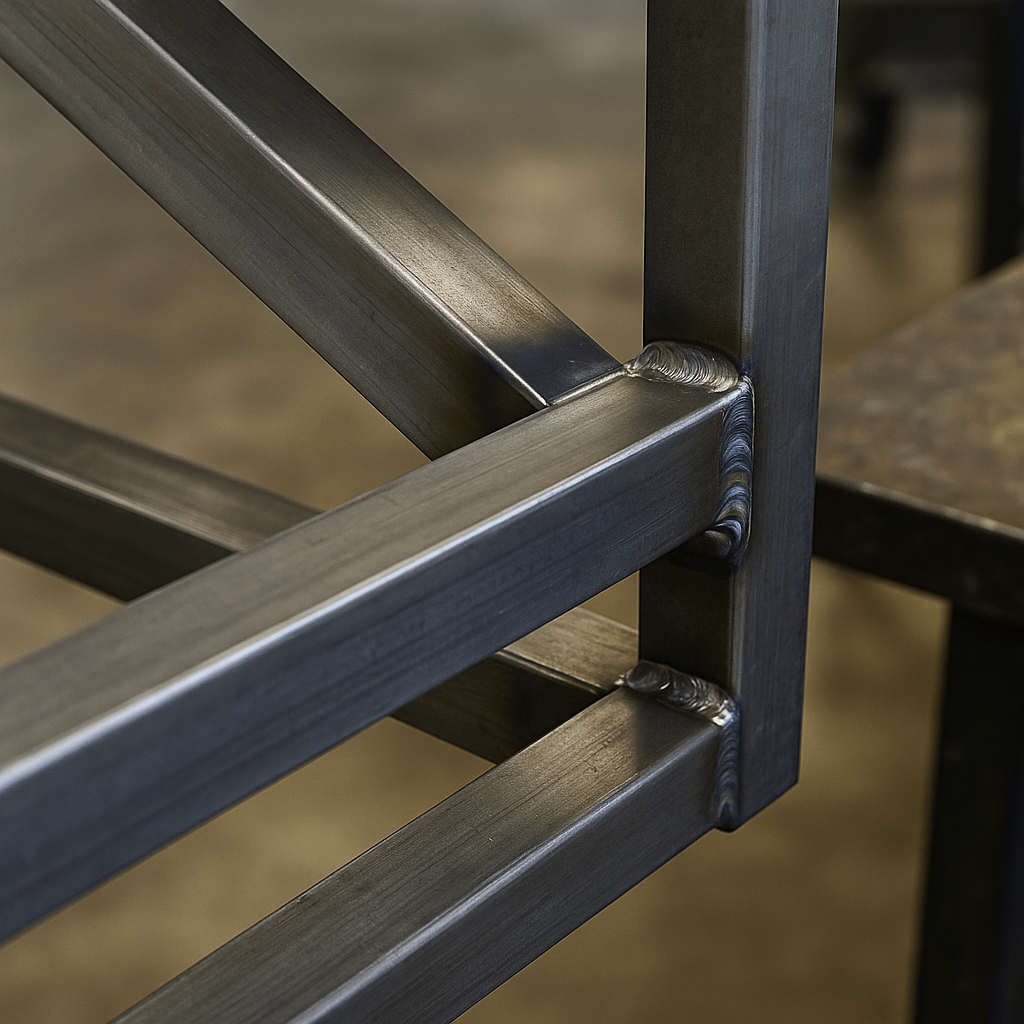How Shear Strength Impacts Custom Metal Frames
In global procurement, part failure isn’t always caused by poor-quality metal or supplier negligence. Often, it results from a mismatch between design assumptions and real-world load directions. A stainless-steel hinge cracking or a frame warping doesn’t always point to weak materials.
This usually stems from misunderstanding shear strength vs tensile strength. Tensile strength refers to resistance to pulling forces, while shear strength deals with forces sliding across internal planes. Even high-strength alloys like stainless steel or aluminum can fail when directional loads are overlooked.
For B2B buyers sourcing custom metal parts such as frames or brackets, grasping this distinction is essential for specifying the right material, improving durability, and avoiding unexpected failures.
Tensile vs. Shear in 304 & 316 Stainless Steel Applications
In practical use, loads are rarely pure tension. Machine brackets, kiosk frames, or cabinet joints face mixed forces — tension, shear, and torsion combined.
For example, 304 stainless steel has an ultimate tensile strength (UTS) around 505 MPa and shear strength near 303 MPa. It performs well in tensile applications but is still susceptible to lateral stresses. 316 stainless steel offers slightly higher deformation-resistant yield values, providing better durability in dynamic conditions.
At the specification stage, it’s crucial to define expected loading modes. Communicating this in your RFQ ensures that the selected material matches the intended structural function and avoids performance mismatches.
Comparing Strengths: Data Doesn’t Tell the Whole Story
Strength charts are useful but don’t capture the full picture. They often emphasize tensile strength, not shear, even when lateral forces dominate in application.
| Material Type | UTS (MPa) | Estimated Shear Strength (MPa) |
|---|---|---|
| 304 Stainless Steel | ~505 | ~303 |
| 304 SS Yield Strength | ~215 | – |
| 316 Stainless Steel | ~515 | ~309 |
| 7075 Aluminum | ~570 | ~330 |
| AISI 4130 Steel | ~670 | ~402 |
| Red Copper | ~210 | ~126 |
Post-processing alters properties too. For example, AISI 1006 cold-drawn steel may gain tensile strength but lose shear ductility. Hardened 4140 steel offers excellent tensile values but can become brittle in shear.

Misused Shortcut: "Shear = 0.6 × Tensile"
A common shortcut estimates shear strength as 60% of tensile strength. While useful for rough comparison, it doesn’t always apply. Factors like forming method or part geometry often change this ratio.
6061-T6 aluminum follows this 0.6 rule quite closely. With a tensile strength of ~310 MPa and shear strength near 186 MPa, the estimate holds. For softer metals or low-ductility alloys, such as red copper, the actual ratio may deviate significantly from 0.6.
Instead of relying on a fixed multiplier, consider the role of joining method, cross-section thickness, and fabrication variables. Discussing these details with your supplier can validate realistic strength expectations.
What Procurement and Design Teams Often Miss
Early collaboration between engineering and sourcing is rare but vital. While engineering focuses on dimensions, procurement often prioritizes cost — overlooking shear-critical conditions.
An M8 bolt may boast 800 MPa tensile strength but still deform under shear if not preloaded. Likewise, a thin 304 stainless tab might tear sideways without proper reinforcement.
Involving suppliers like YISHANG early brings design insights:
Suggesting high-strength options like 4140 steel for load-critical zones
Recommending structural reinforcements for brackets
Proposing weld-compatible alternatives for 4130 when necessary
Such adjustments support long-term product stability and prevent preventable redesigns.
Smarter Design Approaches for Shear Durability
Designing for shear resilience means thinking beyond materials:
Use double-shear joints to spread forces evenly
Add ribs or gussets to minimize lateral flex
Locate welds away from peak shear paths and size them appropriately
Lightweight applications may favor 7075 aluminum for its strength-to-weight ratio. But lower ductility means extra care under shear. Reviewing aluminum strength charts by temper grade helps avoid surprises.
Tolerance also matters. Misaligned holes or overtightened bolts introduce dynamic shear risks. These are common in export metal assemblies.
When Shear Testing Is Worth the Cost
Tensile test data is easy to get — shear data isn’t. If your part relies on lateral strength, ask your supplier about:
ASTM B769 for thin sheet punching
ASTM B831 for double shear in bolts
Lap-shear tests for welds or adhesives
When testing isn’t viable, simulations like FEA (finite element analysis) help identify shear-prone zones. Technical partners like YISHANG can provide FEA insights to strengthen your RFQs.
This improves accuracy, aligns expectations, and prevents surprises after production.

Misconceptions That Undermine Design Integrity
Several myths undermine good decisions:
“Higher tensile is always better” — Not if shear governs failure.
“Bolts only fail in tension” — Many fail in shear when bracing is insufficient.
“Shear only affects welds” — It also impacts brackets, pins, and hole edges.
Materials like brass and other copper-based alloys may appear strong based on tensile specifications but often underperform in applications requiring shear durability. This is especially relevant in connectors or fittings subject to cyclical loading. Always correlate mechanical thresholds like yield stress with real-world lateral performance.
Final Thoughts: Avoid Failure by Asking Better Questions
To elevate performance outcomes, shift focus from price alone to relevant technical parameters:
What’s the primary load path — tension, shear, or both?
Are there simulations or tests validating performance?
Do the load-bearing thresholds align with expected deformation risk?
Discussing these upfront ensures that your custom frames, enclosures, and supports will perform as expected under actual service conditions — not just pass tensile specs.
Frequently Asked Questions (FAQ)
Q1: What is the typical ratio between shear strength and tensile strength in metal materials?
A1: Around 0.6:1 in many cases. For example, 304 stainless steel has ~505 MPa tensile and ~303 MPa shear strength.
Q2: Is 316 stainless steel better than 304 for resisting shear?
A2: Slightly. 316 stainless has better corrosion and marginally higher yield strength, helping under mixed loads.
Q3: When should I ask my supplier for shear strength data?
A3: Whenever the part may face lateral or combined loading — especially with thin metal, welds, or brackets.
Q4: Does shear failure happen more often than tensile failure?
A4: Yes, particularly in joints, pins, or unsupported parts. Shear often precedes total fracture.
Q5: How can I design better for shear loads?
A5: Use dual-shear joints, reinforce stress areas, maintain good tolerances, and validate through FEA or lab testing.



